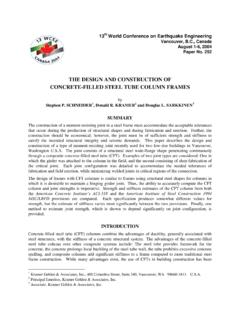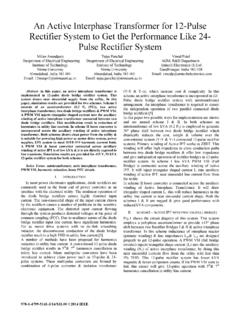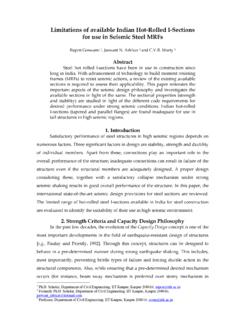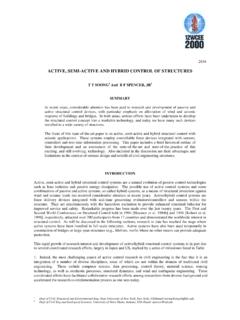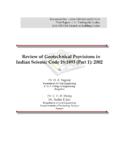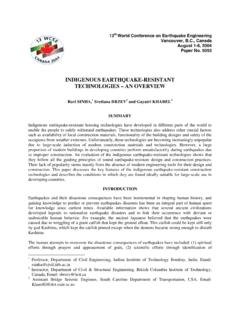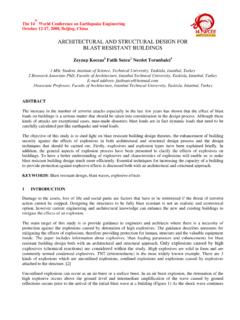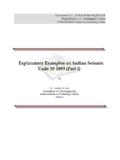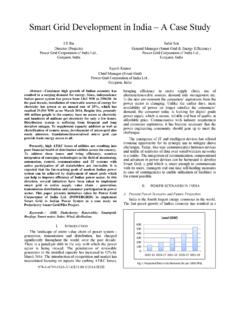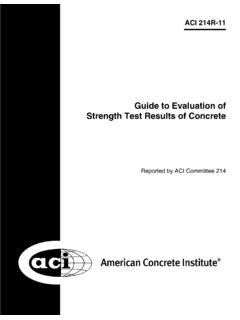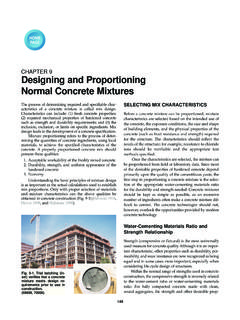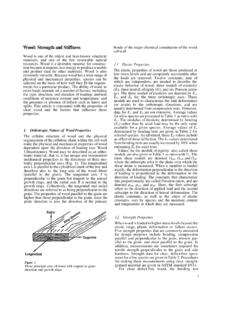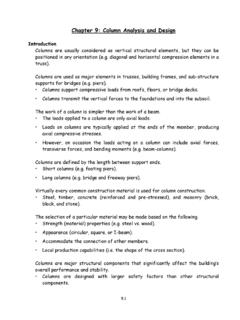Transcription of IS 3495-1 to 4 (1992): Methods of tests of burnt clay ...
1 Disclosure to Promote the Right To InformationWhereas the Parliament of India has set out to provide a practical regime of right to information for citizens to secure access to information under the control of public authorities, in order to promote transparency and accountability in the working of every public authority, and whereas the attached publication of the Bureau of Indian Standards is of particular interest to the public, particularly disadvantaged communities and those engaged in the pursuit of education and knowledge, the attached public safety standard is made available to promote the timely dissemination of this information in an accurate manner to the public.
2 ! $ ' + - Satyanarayan Gangaram Pitroda Invent a New India Using Knowledge 0 1 ' 5 Jawaharlal Nehru Step Out From the Old to the New 1 + , 1 + Mazdoor Kisan Shakti Sangathan The Right to Information, The Right to Live ! > 0 B Bhart hari N ti atakam Knowledge is such a treasure which cannot be stolen Invent a New India Using Knowledge IS 3495-1 to 4 (1992): Methods of tests of burnt claybuilding bricks: Part 1 Determination of compressivestrength Part 2 Determination of water absorption Part 3 Determination of efflorescence, Part 4: Determination ofwarpage [CED 30: Clay and Stabilized Soil Products forConstruction]IS 3495 ( Parts 1 to 4 ).
3 1992 Itldian Standard Methods OF tests OF burnt CLAY BUILDING BRICKS PART 1 DETERMINATION OF compressive strength PART 2 DETERMINATION OF WATER ABSORPTION PART 3 DETERMINATION OF EFFLORESCENCE PART 4 DETERMINATION OF WARPAGE ( Third Revision ) hfuy 1992 Third Reprint OCTOBER1998 UDC 666 712 * 620 1 0 BIS 1991 BUREAU OF INDIAN STANDARDS MANAK BHAVAN. 9 BAHADUR SHAH ZAFAR MARG NEW DELHI 110002 Price Group 4 Clay Products for Buildings Sectional Committee, CED 30 FOREWORD This Indian Standard ( Parts 1 to 4 ) ( Third Revision ) was adopted by the Bureau of Indian Standards, after the draft finalized by the Clay Products for Buildings Sectional Committee had been approved by the Civil Engineering Division Council.
4 This standard covering Methods of tests was first published in 1966 and subsequently revised in 1973 and 1976. This revision has been prepared so as to bring in line with the latest Indian Standards on bricks. Opportunity has also been taken to up-to-date the contents. In reporting the results of a test made in accordance with this standard, if the final value, observed or calculated, is to be rounded ofT, it shall be done in accordance with 1S 2 : 1960 Rules for rounding off numerical values ( revised > . IS 3495 ( Part 1) : 1992 Indian Standard Methods OF tests OF burnt CLAY BUILDING BRICKS PART 1 DETERMINATION OF COMPRESSWE strength ( Third Revision ) 1 SCOPE This standard ( Part 1 ) covers the method of determination of compressive strength of burnt clay building bricks.)
5 2 REFERENCE The hdian Standard IS 5454 : 1976 Method for sampling of clay building bricks ( firsr revision ) is a necessary adjunct to this standard. 3 GENERAL The dimensions shall be measured to the nearest 1 mm. All apparatus and testing equipment shall be calibrated at frequent intervals. The number of specimens for the test shall be selected according to IS 5454 : 1976. 4 Methods For Solid Bricks Apparatus A compression testing machine, the compression plate of which shall have a ball seating in the form of portion of a sphere the centre of which coincides with the centre of the plate, shall be used.
6 Preconditioning Remove unevenness observed in the bed faces to provide two smooth and parallel faces by grinding. Immerse in water at room temperature for 21 hours. Remove the specimen and drain out any surplus moisture at room temperature. Fill the frog ( where provided ) and all voids in the bed face flush with cement mortar ( 1 cement, clean coarse sand of grade 3 mm and down ). Store under the damp jute bags for 24 hours followed by immersion in clean water for 3 days. Remove, and wipe out any traces of moisture. Procedure Place the specimen with flat faces horizontal, and mortar filled face facing upwards between two 3-ply plywood sheets each of 3 mm thickness and carefully centred between plates of the testing machine.
7 Apply load axially at a uniform rate of 14 N/mm* ( 140 kgf/cm2 ) per minute till failure occurs and note the maximum load at failure. The load at failure shall be the maximum load at which the specimen fails to produce any 1 further increase in the indicator reading on the testing machine. NOTE - In place of plywood sheets plaster of Paris may be used to ensure a uniform surface for application of load. Report The report shall be as given below: compressive strength in N/mm2 ( kgf,cm2) = Maximum load at failure in N(kgf) Average area of the bed faces in mm2 ( cm2 ) The average of results shall be reported. For Perforated Bricks Apparatus See Preconditioning Immerse the specimen in water at room tempe- rature for 24 hours.
8 Remove the specimen from water and drain out any surplus water. No mortar shall be filled in perforations and no mortar capping shall be provided. Procedure Place the perforated faces of the brick between two 3-ply plywood sheets each of 3 mm thickness and carefully centred between the plates of the testing machine. Apply the load axially at uniform rate of 14 N/mm2 ( 140 kgf/cma ) per minute till the failure occurs and note the maximum load at failure. The load at failure shall be the maximum load at which the specimen fails to produce any further increase in the indicator reading on the testing machine. NOTE - In place of plywood sheets plaster of Pa;:; may be used to ensure a uniform surfac; application of load.
9 Report The report shall be as given below: Comoressive strength in N/mm ( kgf/cm2 ) = MaGmum load at failure in N ( kgf) Average net area of the two faces under compression in mm2 ( cm* ) The average of results shall be reported. As in the Original Standard, this Page is Intentionally Left Blank IS 3495 ( Part 2 ) : 1992 Indian Standard Methods OF tests OF burnt CLAY BUILDING BRICKS PART 2 DETERMINATION OF WATER ABSORPTION ( Tlzird Revision ) 1 SCOPE This standard ( Part 2 ) covers the method of determination of water absorption of burnt clay building bricks. 2 REFERENCE The Indian Standard IS 5454 : 1976 Method for sampling of clay building bricks (first revision ) is a necessary adjunct to this standard.
10 3 GENERAL The dimension shall be measured to the nearest 1 mm. All apparatus and testing equipment shall be calibrated at frequent intervals. The number of specimens for the test shall be selected according to IS 5454 : 1976. 4 Methods 24-hoar Immersion Cold Water Test 3 Apparatus A sensitive balance capable of weighing within 0 1 percent of the mass of the specimen; and a ventilated oven. Preconditioning Dry the specimen in a ventilated oven at a tem- perature of 105 to 115 C till it attains sub- stantially constant mass. Cool the specimen to room temperature and obtain its weight ( MI ). Specimen warm to touch shall not be used for the purpose.

